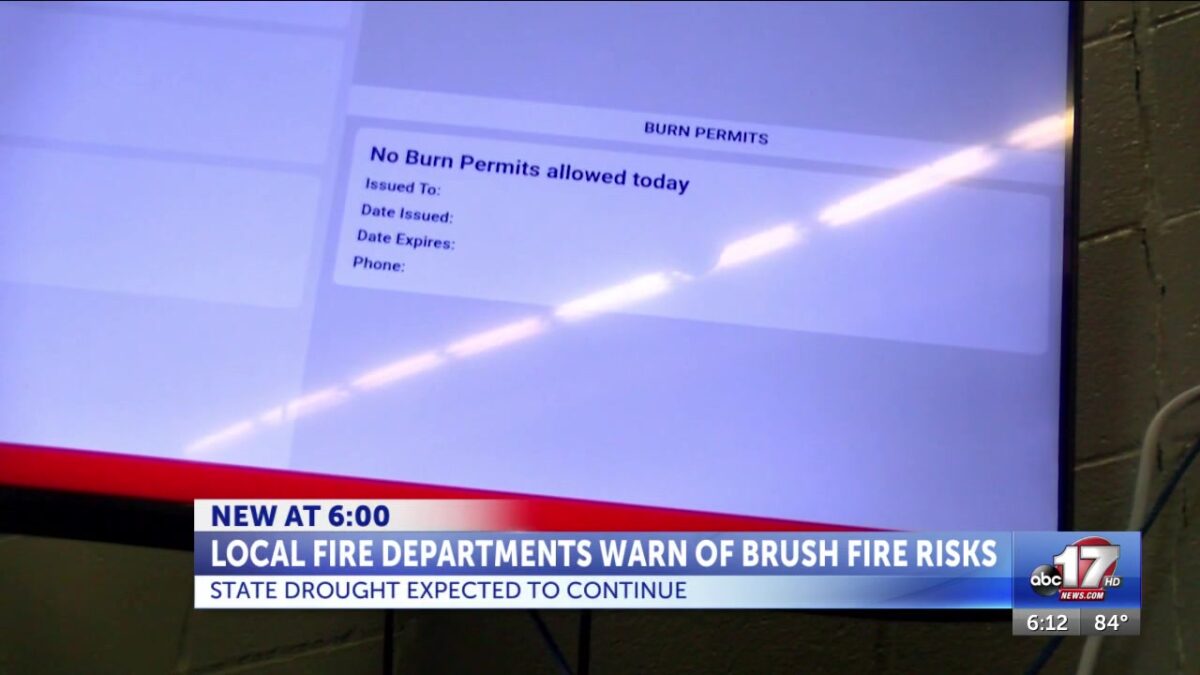Local fire departments stay vigilant as state drought is expected to develop further

Marie Moyer
COLUMBIA, Mo. (KMIZ)
Fire risks are on the rise as Missouri is set to enter another dry month, with drought conditions expected.
Dryness started back in July and continued through August, the former being recorded as the second-driest month in history for the City of Columbia.
Both the Columbia Fire Department and the Missouri Department of Natural Resources, which tracks the state’s climate patterns, report the current drought is typical for the season.
“Especially with the fall weather, there’s a lot of dry vegetation out there and if you couple that with strong winds or just the low humidity in the air, that’s something we always keep in account,” Columbia Fire Department spokeswoman Katherine Rodriguez said.
Drought tracking from Sept. 2 shows the majority of Missouri is abnormally dry or in a moderate drought. Both categories increase the risk of fires, with burn bans typically being put in place in moderate drought locations.
“We know that it can go from moderate drought to extreme drought within a week or two weeks,” Cooper County Fire Protection District spokesman William Johnson said.
In October 2022, Cooper County Fire helped respond to a massive wildfire that burned more than 3,700 acres, 23 structures and displaced more than 100 people. Severe drought conditions and high winds caused the fire to rapidly spread.
“You can have a small fire somewhere around two or three feet in diameter, about the size of a trash can, and then that quickly spread within 10 or 15 minutes to a quarter of an acre or a full acre,” Johnson said.
Johnson adds that any small ember or spark can cause a fire in dry and windy conditions. This includes items like cigarette butts, barbecue embers or the spark from a vehicle’s chains on the road.
“We could have farm equipment or a vehicle that will pass by and do that, a lot of times, even using the combine or farming equipment, if it hits a wire or if it hits a rock or something like that can cause a spark,” Johnson said.
Rodriguez added that outside fires can break out anywhere, even inside city limits.
“Sometimes equipment that you use to mow your lawns, that can start to spark too and then there you have a fire on your hands if you’re not careful,” Rodriguez said.
Both Johnson and Rodriguez remind residents to check heavy machinery for any damage before use and to have water or a fire extinguisher on hand when working during dry periods. Hot coals should be disposed of in metal containers and smokers should be cautious when throwing out materials.
Residents should also be aware of burn orders and should contact their local departments before burning brush or trash during dry periods.
“It’s important for residents to maintain situational awareness and everything that they do, especially when it comes to fire safety,” Rodriguez said. “Something so small can impact not only you but your neighbors.”
Johnson added residents in rural areas should also have an evacuation plan in place in case of a brush fire.
“Once they pick up, they start moving very, very rapidly,” Johnson said.
Elizabeth Kerby, a DNR environmental engineer, suggests residents experiencing drought check out the department’s website for resources on fire safety and relief opportunities. Residents can also submit weekly photos and observations of their yards to help the department track drought patterns in the state.
“Currently, we’re preparing some material information for the administration to consider for future directions,” Kerby said. “But yes, this drought is something that we are actively monitoring.”